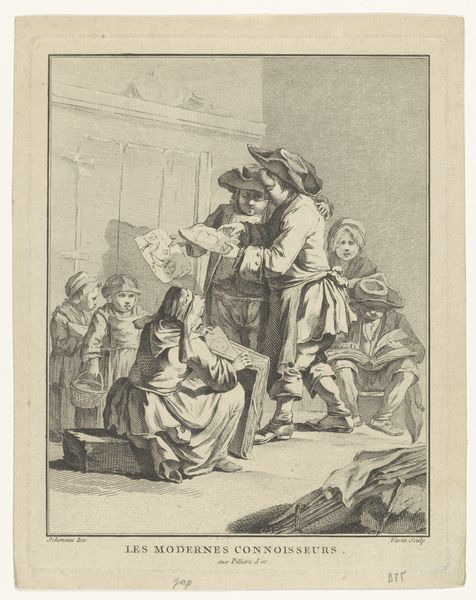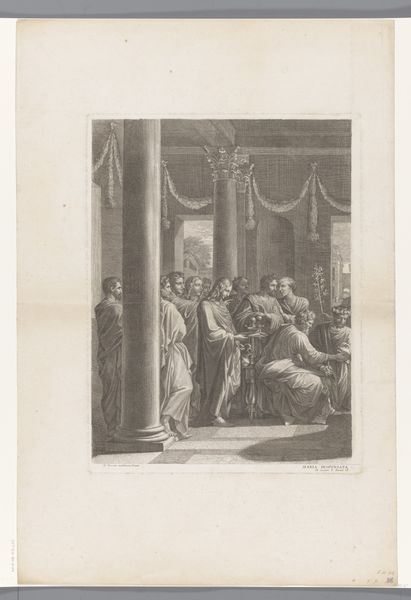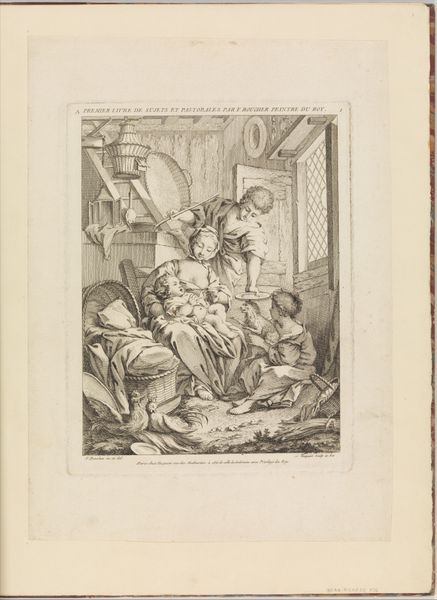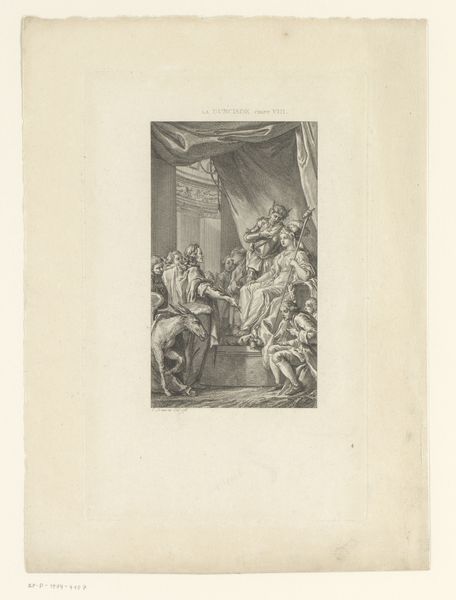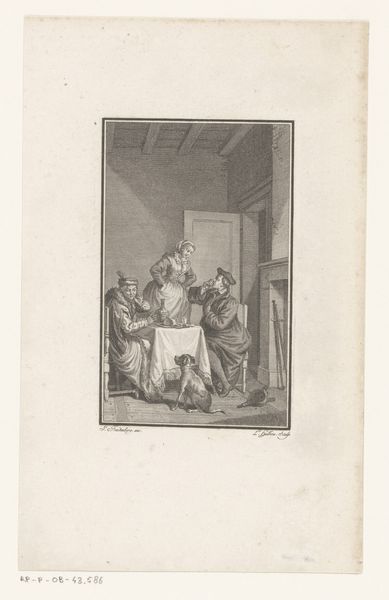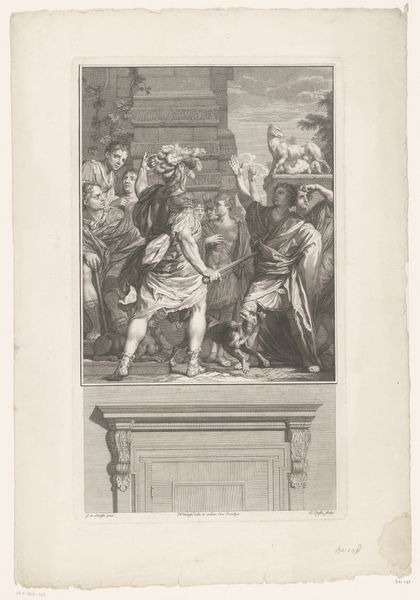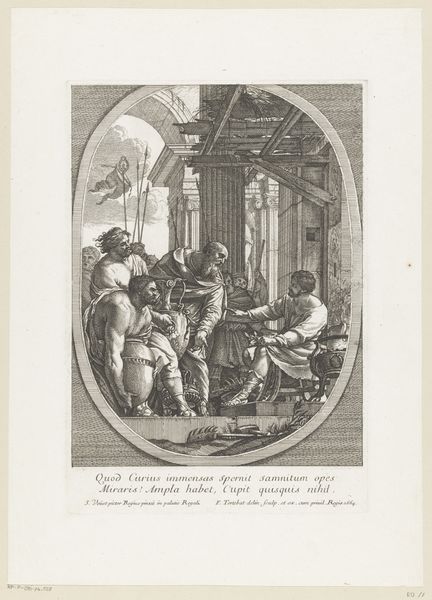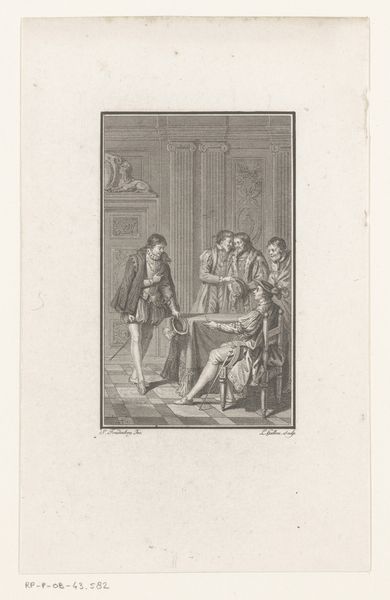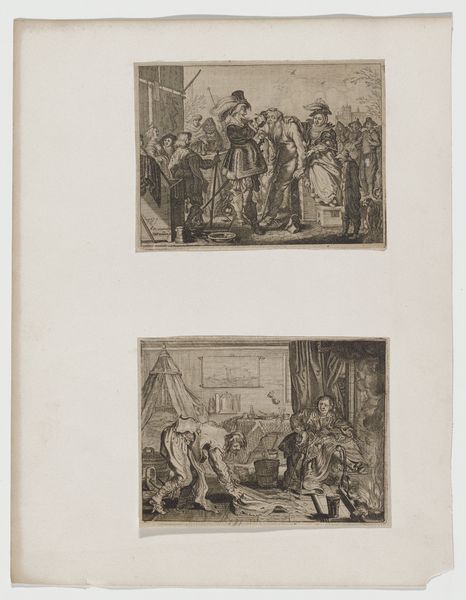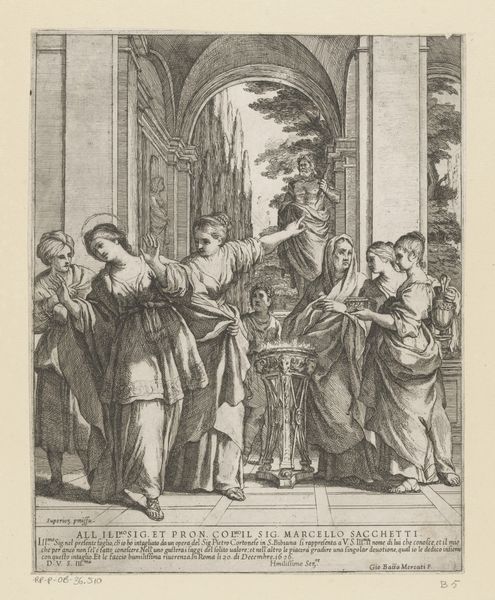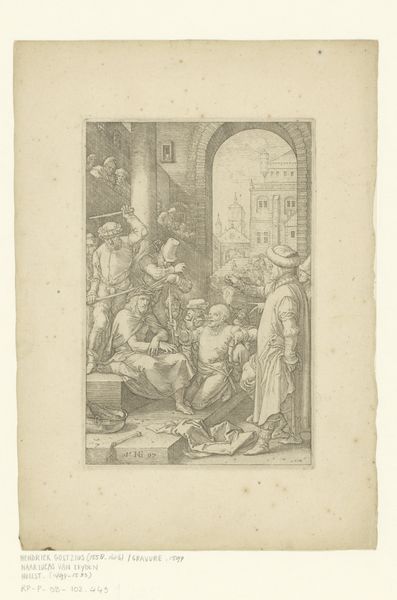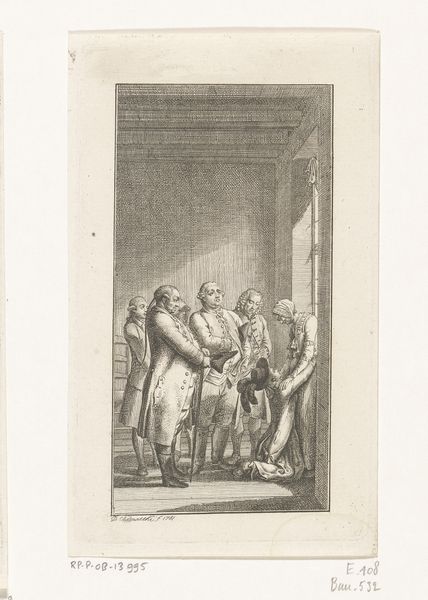
Le Paysan qui avait offense son Seigneur, from Contes et nouvelles en vers par Jean de La Fontaine. A Paris, de l'imprimerie de P. Didot, l'an III de la République, 1795 1795
0:00
0:00
drawing, print, engraving
#
drawing
# print
#
human-figures
#
classical-realism
#
figuration
#
human
#
line
#
genre-painting
#
history-painting
#
engraving
Dimensions: Sheet: 12 5/16 × 10 in. (31.2 × 25.4 cm)
Copyright: Public Domain
Charles Louis Lingée created this print, "Le Paysan qui avait offensé son Seigneur", in Paris in 1795. The composition is structured around a stark contrast between the refined architectural setting and the peasant's humiliation, which evokes feelings of injustice and social critique. Lingée uses line and space to construct a narrative tableau; note how the precise engravings detail the figures, and the sharp lines define their emotional states. The architectural backdrop, with its columns and classical statue, symbolizes the permanence and authority of the ruling class. Yet, the composition destabilizes this authority by placing the peasant's plight in the foreground. The bowing man—smaller in scale and disheveled—creates a focal point. The engraving style itself can be seen as a form of semiotic inscription: the medium, through its linear precision, emphasizes the power dynamics at play. Thus, Lingée uses form to engage with revolutionary ideas, questioning fixed social structures.
Comments
No comments
Be the first to comment and join the conversation on the ultimate creative platform.

